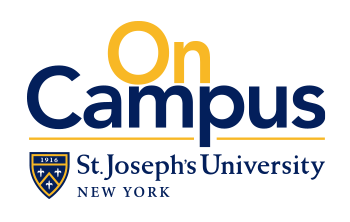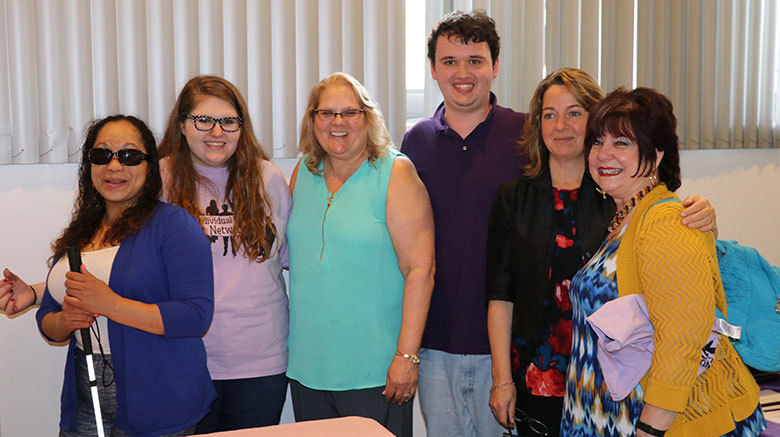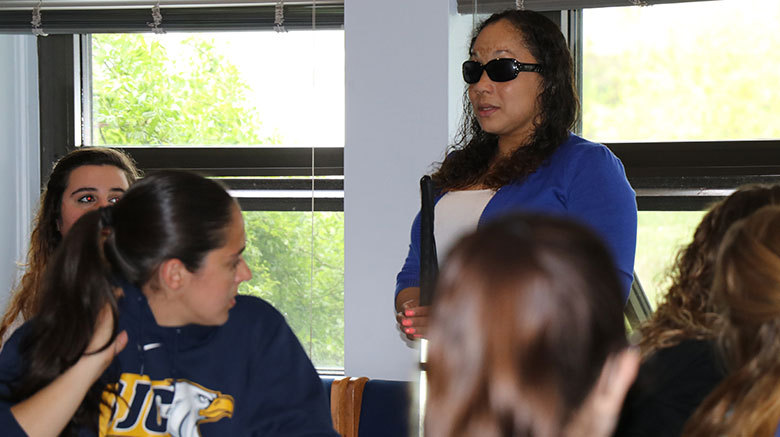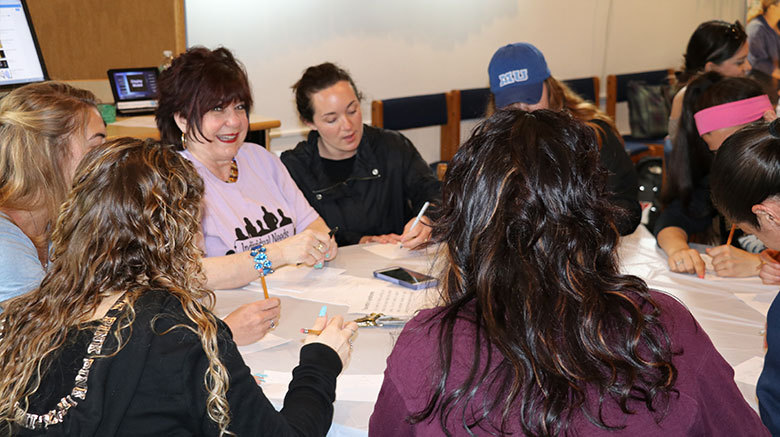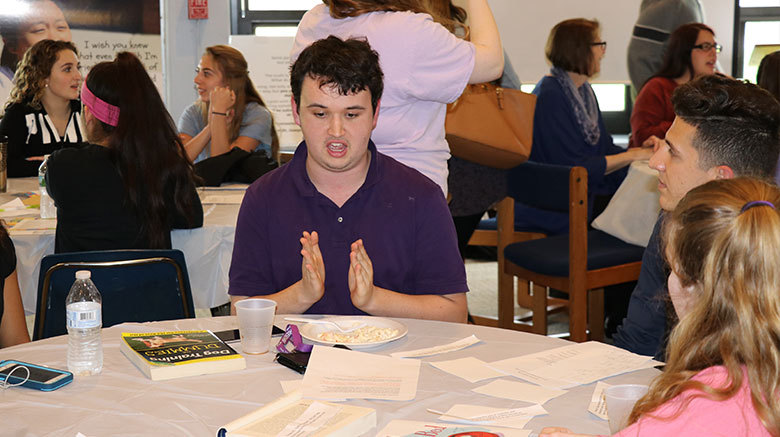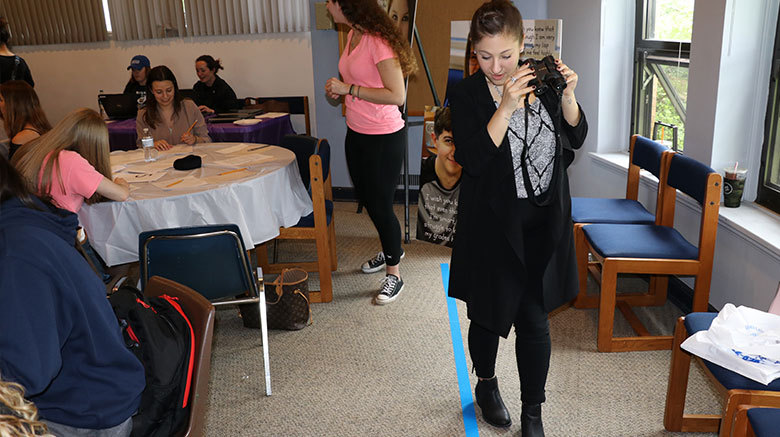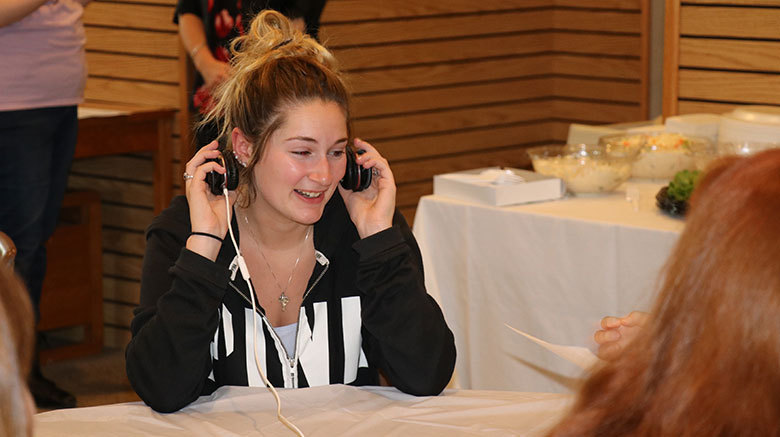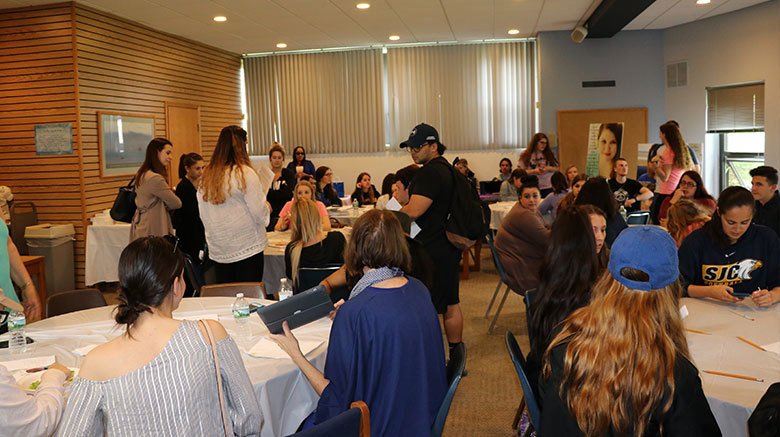There’s always room at the I.N.N.
The motto for the Individual Needs Network remained true last Thursday, though it could be added that while there is always room, it might be a little snug, as more than 70 students, faculty and staff circulated through O’Connor Hall’s Shea Conference Center throughout Common Hour for Simulation Day.
Simulation Day is an event held twice a year that allows students, staff and faculty to walk through an everyday task, but through the eyes of someone with different abilities. For example, students guessed what fruits were kept under a bag by touch alone to simulate what shopping for fruit is like for someone who is blind. Another student moderated a simulation that allowed campus community members a peek into what it may feel like to go through a sensory overload during a class.
The event’s goal is to have participants walk away having learned something that they can apply to their everyday lives, and continue working toward an even more inclusive and understanding campus.”
One of the most vital aspects of these simulations is that many are moderated by students who deal with these realities, daily. As a student who is blind runs the vision simulation, and a student who has autism runs the sensory simulation, it opens up opportunities to ask questions and create a bridge for communication.
Other simulations, run by members and board members of the I.N.N., addressed communication disorders, depth perception, Tourette’s syndrome and ADHD. The I.N.N. was also joined by NSSLHA (Student Speech Language Hearing Association), who hosted a simulation in deafness/hard of hearing.
The event’s goal is to have participants walk away having learned something that they can apply to their everyday lives, and continue working toward an even more inclusive and understanding campus.
Department of Child Study Professor Maureen Del Monico, M.A., a board member of the I.N.N. who ran a simulation on communication disorders, said, “I really wanted people to understand that verbal communication is not the only way to be understood, but also how hard it is when you cannot use verbal language to convey an idea.”
Katherine Granelli, Ed.D., a board member of the I.N.N. added, “In order to effectively teach or reach someone else, the old adage holds true: Walk a mile in their shoes. It’s easy to stare, judge, or guess at why someone behaves as he/she does or even to ignore another … but we each have a social responsibility to dig deeper. Go that extra mile to find out what someone else lives every day in order to make a difference in his or her life. That takes true character.”
In the future, the I.N.N. hopes to expand to reach and support as many students as possible. For more information about the Individual Needs Network, visit The INN at St. Joseph’s College NY on Facebook, or contact theinn.li@student.sjcny.edu.
